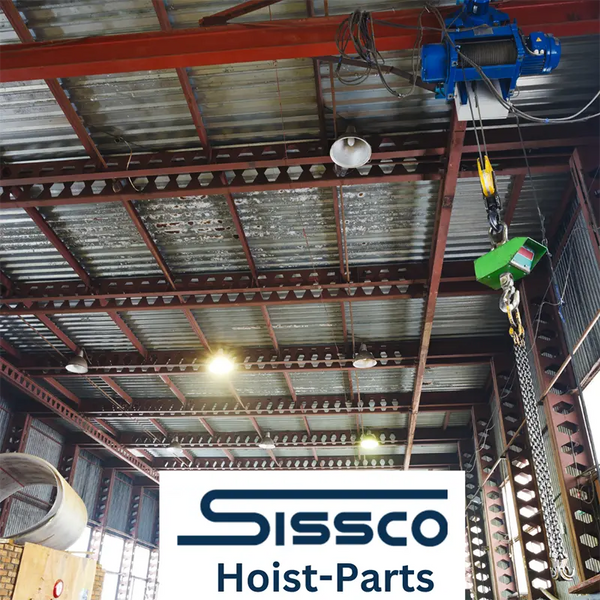
Every operator who works around heavy lifting equipment knows that a hoist failure is more than an inconvenience. It can stop production, damage property, or cause injury in seconds. Often, the problem begins quietly. A brake feels uneven, the chain snags for a moment, or a motor sounds slightly strained. Small warning signs like these are easy to ignore, especially when deadlines press and downtime costs money. Yet every one of them points to the same truth: a hoist is only as safe as the parts inside it.
When components begin to wear, the decision about how to replace them becomes critical. Choosing a cheaper imitation part can seem reasonable, but appearance is not the same as engineering. A part that merely fits is not necessarily performing within the specifications for which the hoist was designed. Genuine Budgit hoist parts are built to restore the exact tolerances, hardness, and strength the original design demands. Anything less changes how the machine behaves under load.
Safety Lives in the Details
Budgit hoists operate as finely balanced systems. Every brake, clutch, and chain link interacts with the next to transfer load smoothly. When one component slips out of specification, the balance shifts and the risk begins.
For example, a friction pad that is a few degrees softer than Budgit’s specification will heat more quickly under a heavy lift. After repeated cycles, the surface temperature rises beyond its intended limit, and the braking torque drops. The operator may not notice immediately, but the difference appears as a slower stop or a brief slide on descent. In a system moving hundreds or thousands of pounds, that minor delay matters.
Budgit parts are manufactured to prevent this kind of performance drift. Each component is tested to maintain stability through repeated load cycles and heat exposure. By matching exact friction coefficients, surface finishes, and hardness levels, Budgit ensures that a repaired hoist performs as it did before the part wore out. That consistency is what keeps operators confident and equipment predictable.
Why “Good Enough” Becomes a Problem
The pressure to control costs is real. When a generic chain or gear looks identical to the original, it can be tempting to buy based on price. The danger hides in what cannot be seen.
Two chains may share dimensions, but their heat treatments may differ by as much as 20% in hardness. That difference changes how the metal stretches under tension. As the chain elongates unevenly, the sprocket teeth wear at an angle, adding vibration and imbalance. The wear then spreads through the drive assembly and eventually reaches the motor bearings. What began as a minor substitution becomes a full mechanical failure that halts production.
Maintenance teams that rely on Budgit components avoid this cycle because they restore their hoists to the same known conditions tested by the manufacturer. They can track chain elongation, friction wear, and torque response against reliable benchmarks. That accuracy means fewer surprises and longer intervals between rebuilds.
Confidence You Can Feel
The most experienced operators often describe a well-maintained Budgit hoist as something that simply feels right. The lift sounds smooth, the brake reacts instantly, and the chain tension stays consistent. These cues build trust between the person and the machine. When that feeling changes, confidence drops, and hesitation sets in.
Hesitation can be dangerous in a busy environment. Operators who doubt their equipment instinctively slow down or overcompensate, which disrupts coordination with the rest of the crew. Using Budgit-certified parts keeps the hoist performing consistently every time. Predictability reduces stress and keeps work flowing safely and efficiently.
Every Budgit replacement component is tested to maintain the original performance margin built into the hoist. It is not about brand loyalty. It is about ensuring that the hoist stops, starts, and holds with the same reliability it had when it was new.
Precision Protects People
Reliability does not come from luck or habit. It comes from precision. Each Budgit hoist is designed so that every moving part supports the next. When a bearing is slightly softer than specification, it vibrates. When a gear is rougher than expected, it creates extra backlash. Those small deviations multiply until the hoist no longer behaves predictably.
Shops that choose genuine Budgit parts preserve the alignment for which the equipment was built. They maintain even chain loading, proper torque distribution, and consistent braking behavior. Over months and years that precision prevents failures and extends service life. It also preserves the one thing that cannot be replaced: the trust of the people who work beneath the lift.
A safe hoist is not defined by its price tag or appearance but by how it performs under pressure. Genuine Budgit parts deliver that assurance because they are made to the same standards that built the company’s reputation for dependable lifting. They turn maintenance from a risk into a routine and keep every lift as safe as the first.